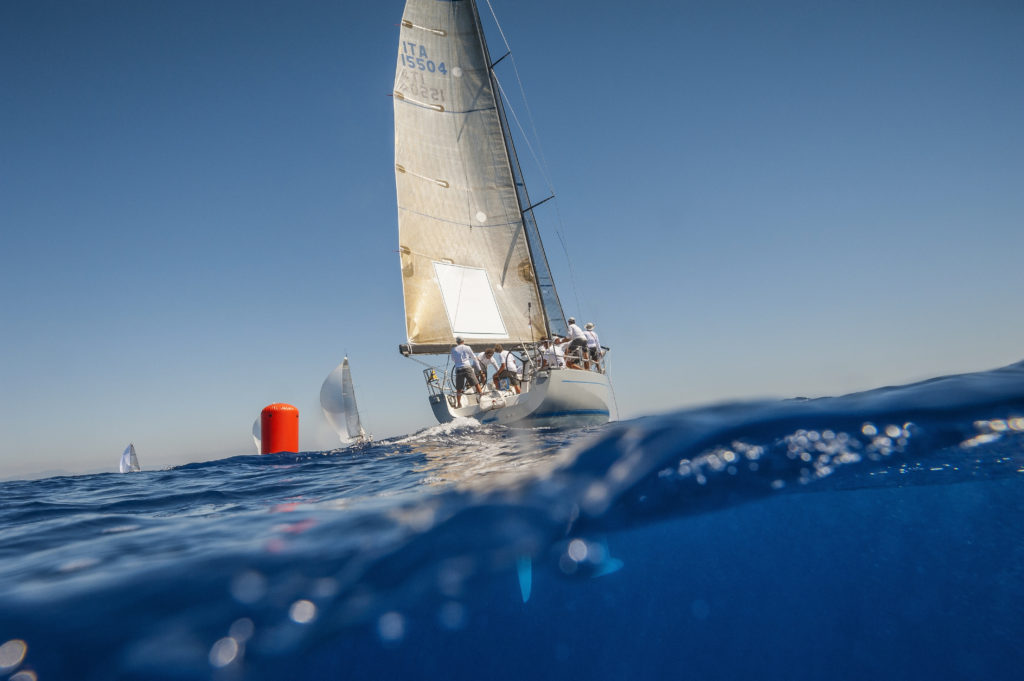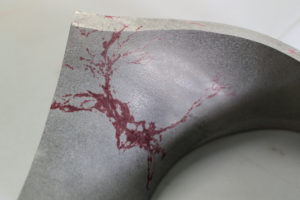Stress corrosion cracking involves the slow growth of small, often microscopic, cracks through a metal part in a corrosive environment. The cracking can continue to the point that the part fails suddenly and unexpectedly even though it still appears new and in good condition.
My first experience with stress corrosion cracking happened in the Charleston harbor when the stainless steel rudder suddenly separated from a sailboat during moderate winds. What had been a pleasant evening sail turned instantly into being in a difficult to control boat in the middle of the busy shipping channel. The rudder remained attached only by a lanyard. When we later examined it, we found it fractured in a fairly large area near a weld from a previous repair that had a network of fine stress corrosion cracks throughout that gave it a slightly duller appearance than the remainder of the rudder. The area would have just appeared to have been a minor surface blemish or scuff during a casual observation.
Although the sudden and unexpected failure of a part is similar to that experienced with metal fatigue, stress corrosion cracking is an entirely different mechanism. Stress corrosion cracking involves cracks that initiate on the surface, often at welds, pits or rough areas, and then slowly propagate through the material through a combination of tensile stress and corrosion within the cracks. The cracks grow and spread in many directions over the course of time.
The crack progression can be either intergranular or transgranular. The stress in the undamaged area of a part under constant load increases as the cracked area increases until the part ultimately fails. Even if no visible loads are applied, substantial residual stresses retained from manufacturing processes can exist in a part, particularly in cold formed parts and at welds. A corrosive environment, elevated temperature, and high stresses are all factors that contribute to stress corrosion cracking.
Austenitic stainless steels (generally the common stainless steels that contain nickel) have limitations in their use in marine environments because of stress corrosion cracking, although they are commonly found in areas ranging from deck hardware to propellor shafts and standing rigging. They can experience stress corrosion cracking at ambient temperatures in the marine environment, particularly if stress levels are high. Some austenitic stainless-steel alloys are available that are less susceptible to stress corrosion cracking in the marine environment. Care must be used in the design and manufacture of stainless-steel parts for marine service to specify the correct material and minimize stresses. In the case of the sailboat rudder it appeared that it had an area that was highly stressed by the weld in addition to the stresses created by its normal operation.
The investigation of a failed stainless steel part should include an evaluation of whether stress corrosion cracking contributed to the failure. Please contact Warren should you require investigation of parts that have failed in the marine environment.
John Phillips, senior consulting engineer at Warren, has more than 35 years of crane and heavy equipment experience and more than 20 years of experience in forensic engineering. A licensed professional engineer in South Carolina, North Carolina, Georgia, Louisiana and Ohio, he’s NCEES registered both as a model engineer and with The United States Council for International Engineering Practice, USCIEP. John has designed crane systems, supervised installation, tested and certified lifting equipment even serving as a project engineer for maintenance and certification of nuclear weapon lifting and handling systems. His extensive experience helps him determine the cause and scope of damage for crane, hoist and other lift equipment incidents.






